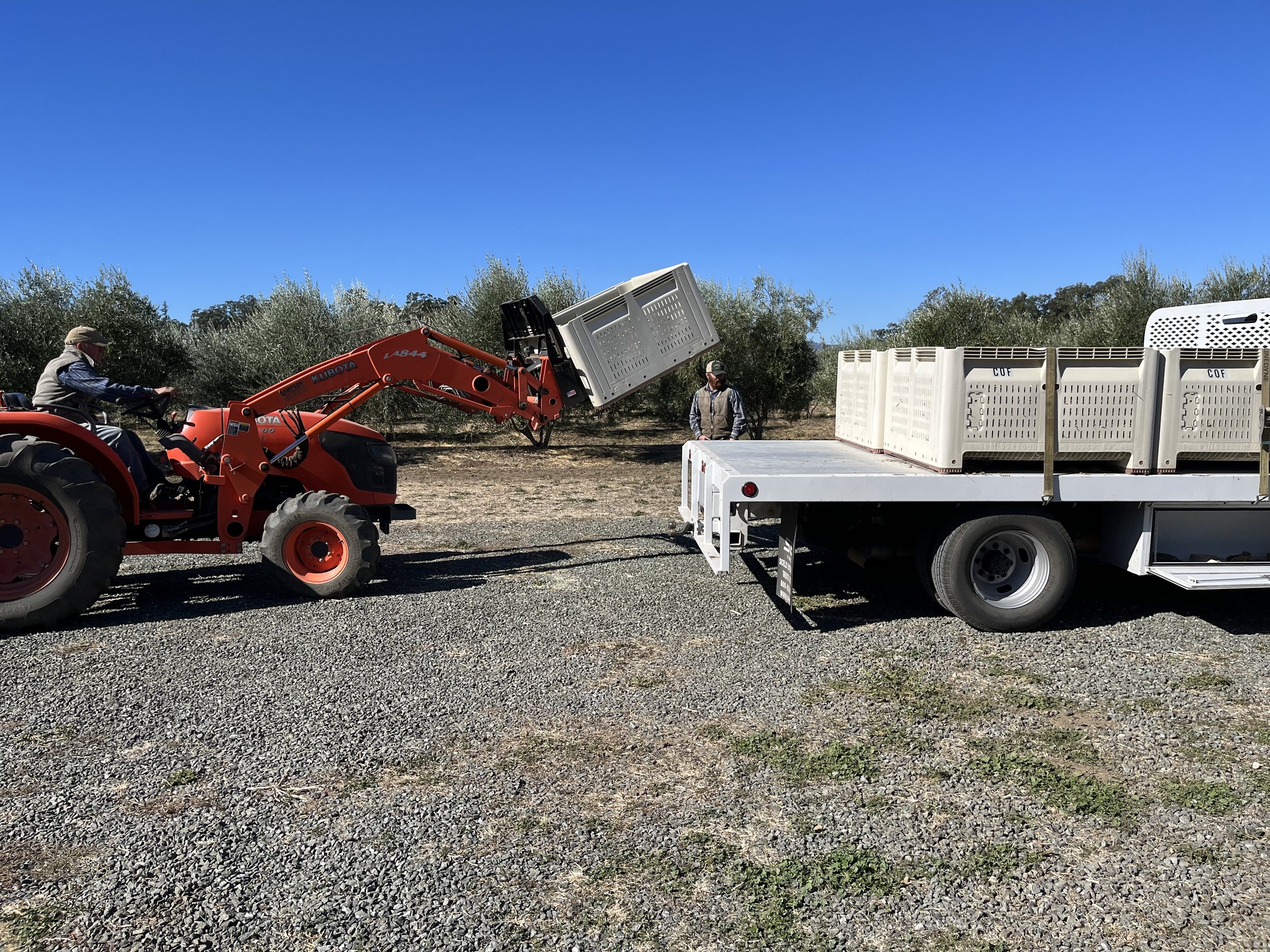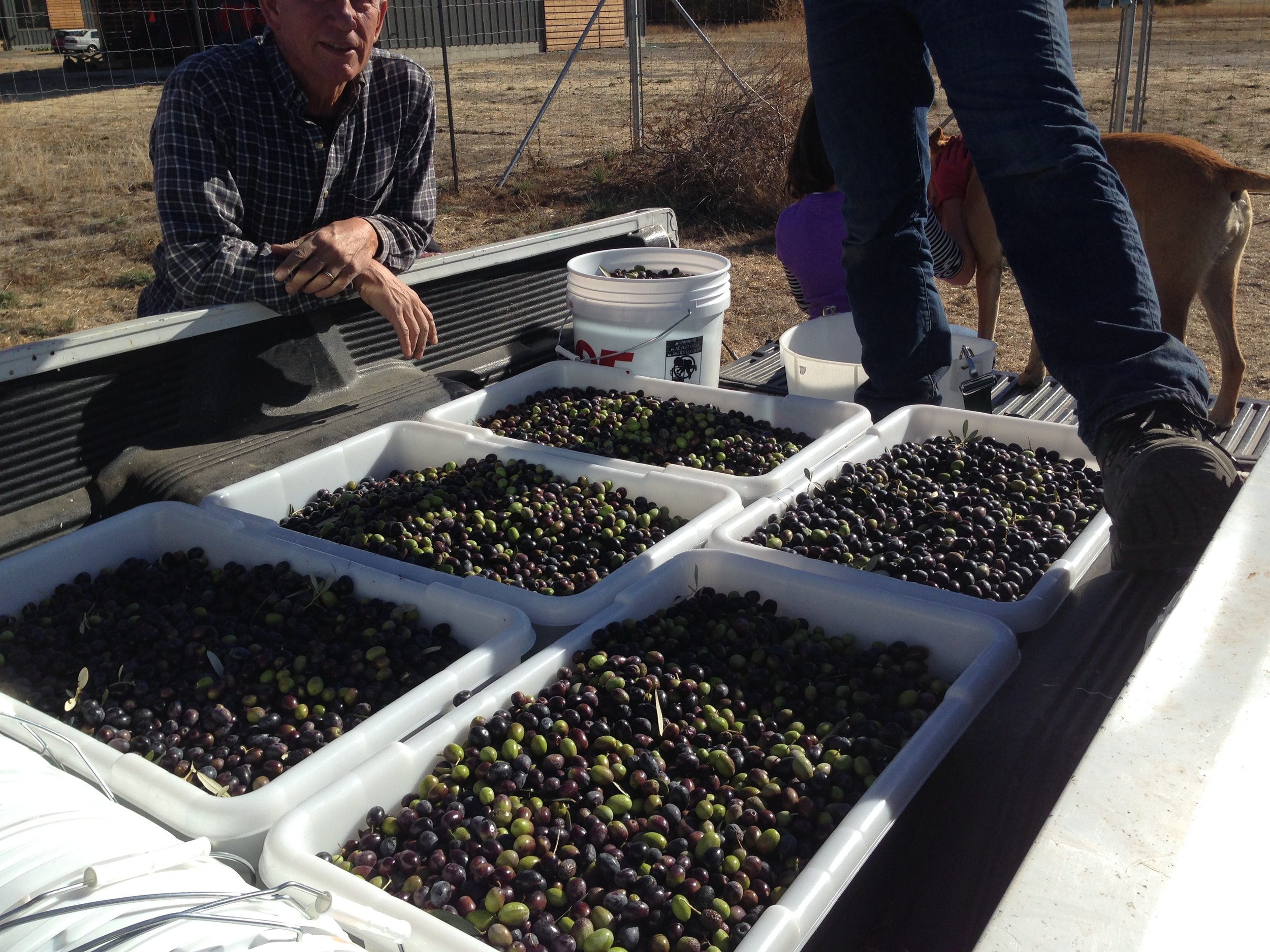Our harvest day began before sun up as the crew drove in, parked their trucks and had a few sips of warm coffee.
Our harvest was smaller than last year’s block buster bumper crop, stretching over just 1 1/2 days. Reasons are varied, but in general olives have on and off years. We are working to improve our pruning in order to preserve outside fruiting branches, fertilizing only as needed, and irrigating strategically to produce a more balanced production from year to year. But we still have a lot to learn! This year we were able to deliver the olives to Chacewater Mill, fifteen minutes away, right after the last olive came off the tree.
Above is the entirety of our first harvest in 2013: 220 pounds versus the 6 tons we picked last year. We harvested late that year, quite oblivious to the possible risk of a killing frost. We were lucky and picked a good mix of ripe and green fruit.
Our orchard on a late November afternoon with Mt. Konocti in the distance
Now that the hectic days of harvest, milling and delivery to the bottler are over - we quickly moved to getting our cover crop seed planted. We use a combination of organic pea and bell bean seed. We prepped the seed bed between the rows of trees by doing a light tilling and dragging the soil smooth afterwards. The day after harvest, Bella Vista’s tractor operator came in and drilled in 600 pounds of seed throughout our 9-acre orchard.
And exactly a month later we spy the first pea sprouts pushing through the soil. More rain is expected soon, so these little seedlings ought to get a boost to flourish over the next six months. Next spring we will do some pruning to thin the inside of the trees. And then we watch for the branches to blossom and so the cycle begins again for the 2023 crop.
















